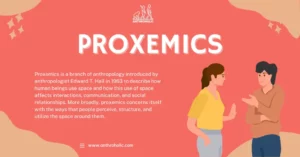AI Answer Evaluation Platform Live Now. Try Free Answer Evaluation Now
Language and Communication
There are roughly 6,000–7,000 languages spoken in the world. Considering there are only 143 countries, this is a tremendous figure. All humans can talk about a language, and this, combined with our culture, distinguishes us from all other organisms. Language and culture are intertwined ideas because without language, culture is impossible, and language is how culture is transmitted down to the next generation. Humans place such a high value on language that our ears are best suited to collecting voice frequencies. So, what is this component of humanity that makes us human?
“It is quite an illusion to imagine that one adjusts to reality essentially without the use of language and that language is merely an incidental means of solving specific problems of communication or reflection”
Edward Sapir.

As suggested by the phrase above, we realize that language and communication are essential for human beings to interact and express themselves. Without language and communication, we are like a cellphone without a network connection. It enables us to recognize the groups to which we belong promptly. However, communication between people is more comprehensive than language. A significant part of the same is played by nonverbal communication.
Language
A language is a set of arbitrary symbols that a group uses. These indications may be expressed verbally, in writing, or both. It is one of the primary ways we send and receive messages. On the other hand, non-verbal communication includes body language, changing one’s appearance, and body language (what we wear and our hairstyle).
Even non-human primates have a means of communication. Still, as far as we can tell, they use a call system, an oral communication system that uses a series of sounds in response to environmental cues.
Origin and acquisition of Human Language
Where does language originate? According to estimates, humanity first developed speech between 200,000 and 50,000 years ago. The most recent research has advanced the theory that humans use language to transmit knowledge about how to manufacture tools, which has hijacked our brains to specialize in processing language-related information. Making tools was essential to our culture and existence. Therefore we needed to be able to teach others how to do it as well as our children.
Everyone tends to agree that there were two stages in the development of human language. First, our ancestors are said to have created new sounds by fusing older ones. The second change would necessitate modifying the brain to produce these distinct forms of speech by managing the ability to generate sounds.
In addition to these two phases, the ability to talk and have the auditory connections necessary to interpret spoken language requires biological modifications. For example, compared to other animals, humans’ larynx (voice box) is located lower in the throat. Humans also possess a softer palate and a rounder tongue, which would have enabled our ancestors to produce a greater variety of sounds than apes.
Further, specific areas of the brain, such as Wernicke’s area in the left temporal lobe (behind your left ear) and Broca’s location in the left frontal lobe (near your left temple), which regulate auditory processing (understanding speech), enabled language. Language development requires the formation of these specialized areas because it takes a lot of cognitive energy to produce, process, store, and understand language.
Every language has a vocabulary or lexicon. The study of a language’s meaning structure is called semantics. The study of semantics in a particular cultural setting is called ethnosemantics and is of particular interest to anthropologists. Anthropologists can better understand how people categorize, characterize, and experience their environment using ethnosemantics. Focal vocabularies are collections of words that describe crucial facets of a culture.
The Building Blocks Of Education
We, humans, communicate through speech. But how we build this speech involves a process and structure. Phonemes, morphemes, and syntax are the fundamental universals of language structure that support Chomsky’s idea of universal grammar.
Phonemes: Despite not being meaningful sounds, phonemes are essential. In a language, they are the smallest distinct unit of sound. Phonemes would be constants and vowels. Phonemes include, for instance, the sounds the letters C, T, and S create.
Morphemes: The meaning of morphemes is bearing units. Words like “cat” can be morphemes, as can letters smaller than words like “s.” The letter “s” stands for plural in English. Because of this, the word “cats” contains the morphemes “cat” and “s.”
Syntax: Grammar syntax. The rules specify how morphemes or words can be put together to create meaning. In an English sentence, word placement matters. An illustration would be the phrase, “The swift brown fox jumps over the sluggish dog.” The term “the sluggish dog” and “the swift brown fox” do not have the same meaning. (The sluggish dog jumps over the swift brown fox.) The fox is being jumped over this time.
Non-Verbal Communication
Cultures also use nonverbal communication, although they still entail rules and symbols. Kinesics studies body language, including gestures, facial expressions, movements, and positions. Face expressions could conflict with spoken communication; hand gestures emphasize points. Our communication is enhanced by voice volume and tone. Even silence may be a powerful tool for communication.
Body language varies by culture. In many cultures, the same body movements and gestures represent different things. For instance, in North America, the sign for the stop is to hold your hand out with your fingers grouped and your palm facing outward. A similar gesture is quite offensive in Greece. On the other hand, in Vietnam, where the crossed fingers are believed to resemble female genitalia, it is considered good luck in North America.
The way we dress, style our hair, make eye contact, and even stand close to one another are all non-verbal communication. The study of proxemics examines how culture affects how space is used. This may be both in a person’s private and actual territory. Proxemics of physical territory example is the usage of color in one’s physical area. To create a tranquil ambiance, a health spa is more likely to use calming, excellent greens and blues, unlike reds and oranges.



